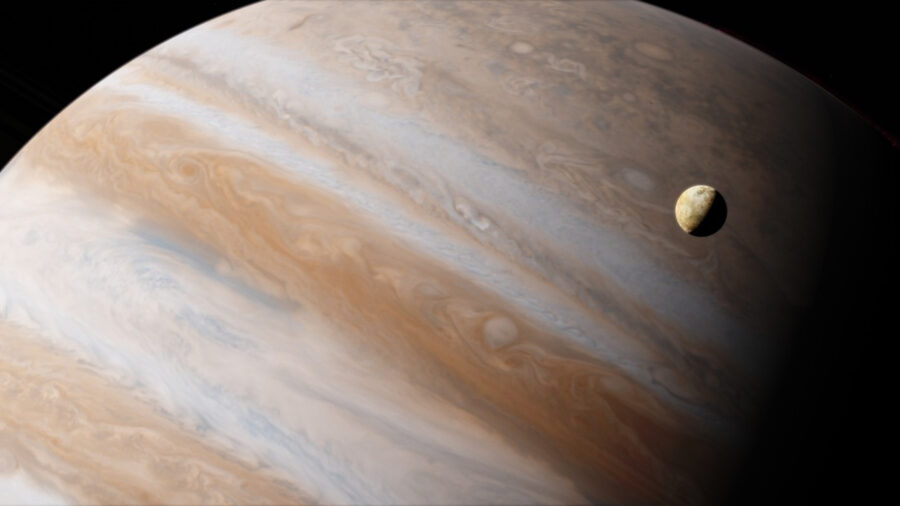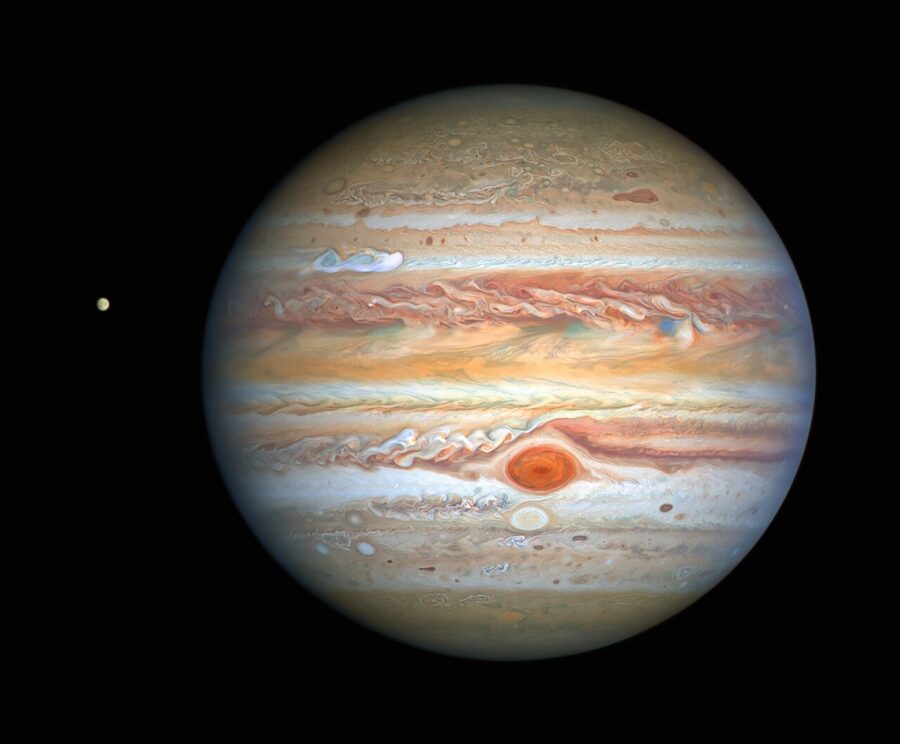Scientists Just Discovered A Planet 10 Times The Size Of Jupiter
There's a planet that absolutely dwarfs Jupiter, and scientists just found it.
This article is more than 2 years old

The planet, scientists say, shouldn’t be there, but it is. In a system where astronomers previously believed the formation of planets would be impossible, scientists have discovered one of the most massive worlds on record. The newfound object is ten times as massive as our own Solar System’s Jupiter. To put that in perspective — Jupiter is, according to Universe Today, 317.8 times more massive than Earth.
With the not particularly catchy name of b Centauri (AB)b, the massive, Jupiter-dwarfing planet was first noticed by researchers in July, with their findings published this week in the science journal Nature. The discovery was particularly surprising because the planet was found in a system with B-type dual stars, which NBC News calls “a massive pair of extremely hot stars.” Systems like this one have been observed before but this is the first time a planet has been found in a system with a star more than three times massive than our own Sun.
Such systems are apparently some of the most destructive and inhospitable you can find in the void. Per NBC News, the European Southern Observatory writes that the mass and heat of the system’s B-type stars emit levels of radiation which should, according to what was previously believed, “work against planet formation.” They point out b Centauri (AB)b’s orbit is one of the widest orbits recorded — equaling over 100 times wider than Jupiter’s orbit around the Sun. This, the observatory writes, could help to explain how the planet managed to form as well as how it’s survived.
The study’s leader is Markus Janson, who works at Stockholm University as a professor of astronomy. According to Janson, the discovery of b Centauri (AB)b may directly lead to finding more planets, whether they dwarf Jupiter or not. In an email to NBC News, Janson said that along with trying to get more “telescope time,” the study will be going back through archives, giving priority to systems with similarly high-mass stars. Now that the astronomers know that planets can form in such environments, they hope to find previously missed worlds.

Closer to home, Jupiter itself is indicative of how little we know about the worlds beyond our own. Galileo first identified Jupiter in 1610. Yet, as recently as last September, the Hubble Telescope returned our best, clearest images yet of the gas giant — helping us to learn more about Jupiter while highlighting just how much we don’t know. Along with the famous Great Red Spot — a massive storm bigger than the Earth — astronomers noticed previously undiscovered small, counterclockwise dark clumps. They could only speculate as to what the clumps were.
Beyond Jupiter, but still close (relatively speaking) to home, is the fabled Planet Nine. Astronomer Michael Rowan-Robinson and others believe there could be a ninth, undiscovered planet in our Solar System. Based on archived data from the Infrared Astronomical Satellite launched in 1983, which scanned the entirety of the night sky in the infrared spectrum, Rowan-Robinson believes there are three possible spots in the Solar System where Planet Nine could be hiding.












